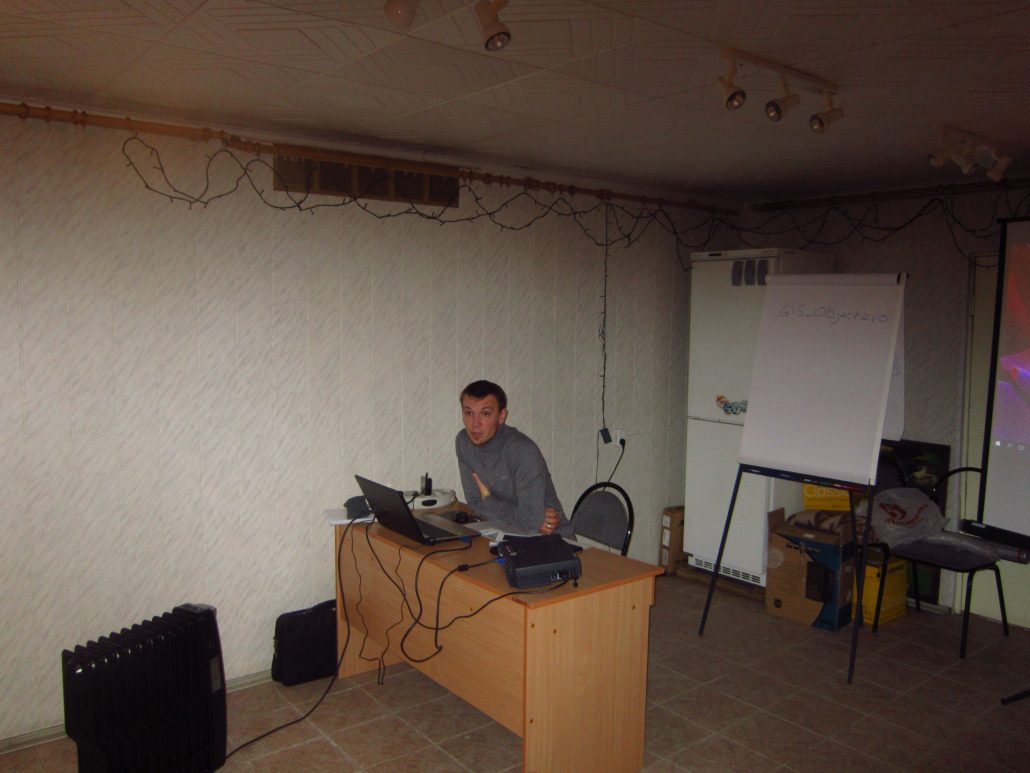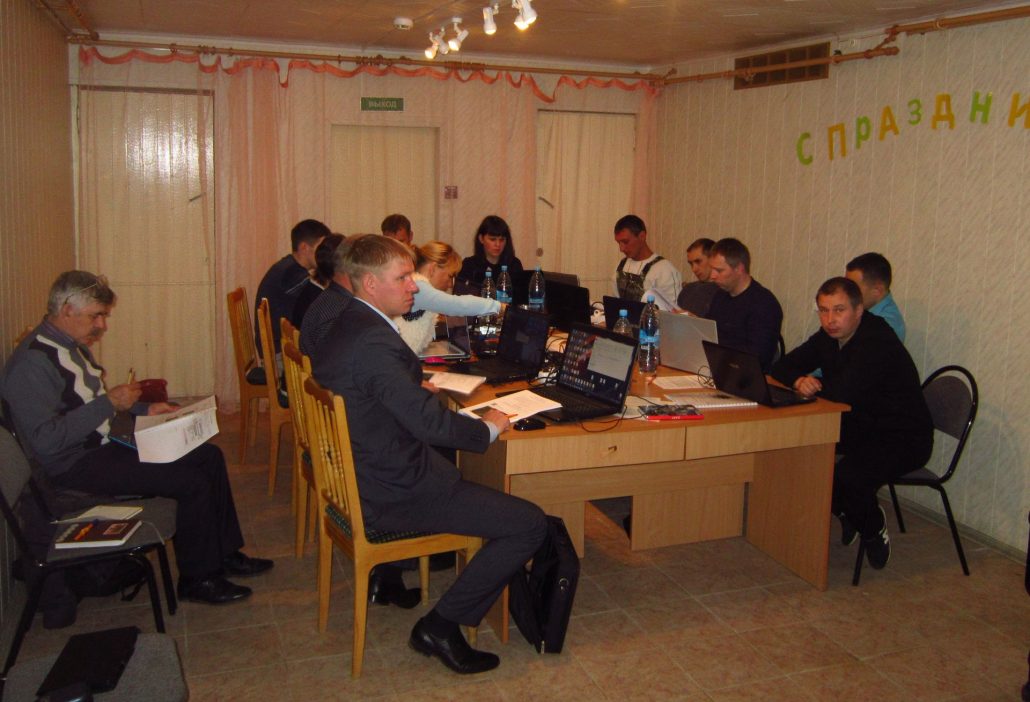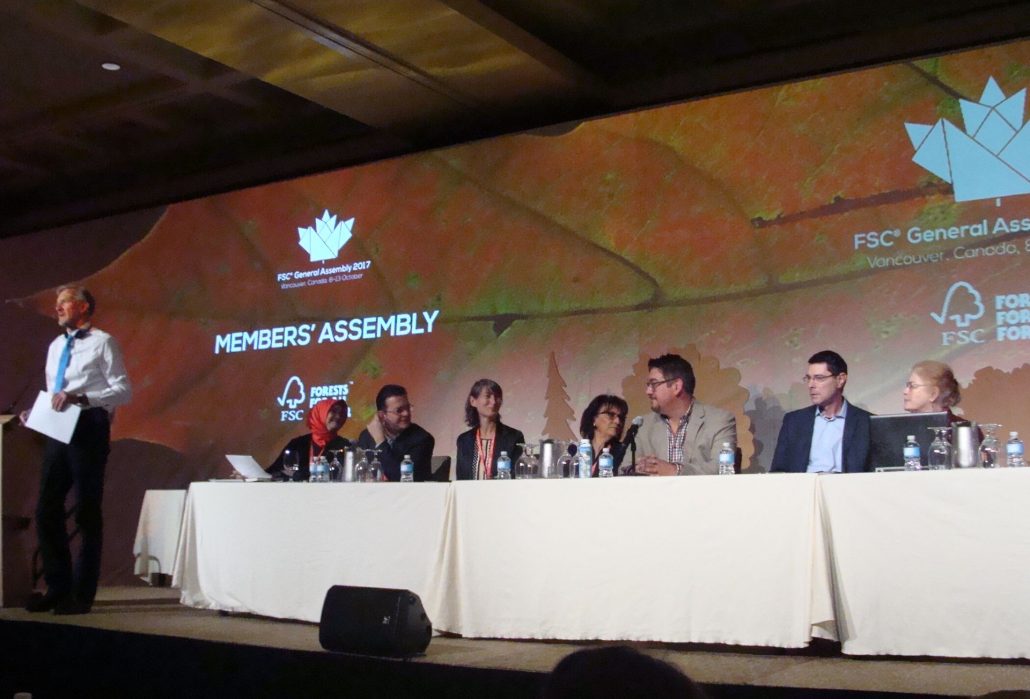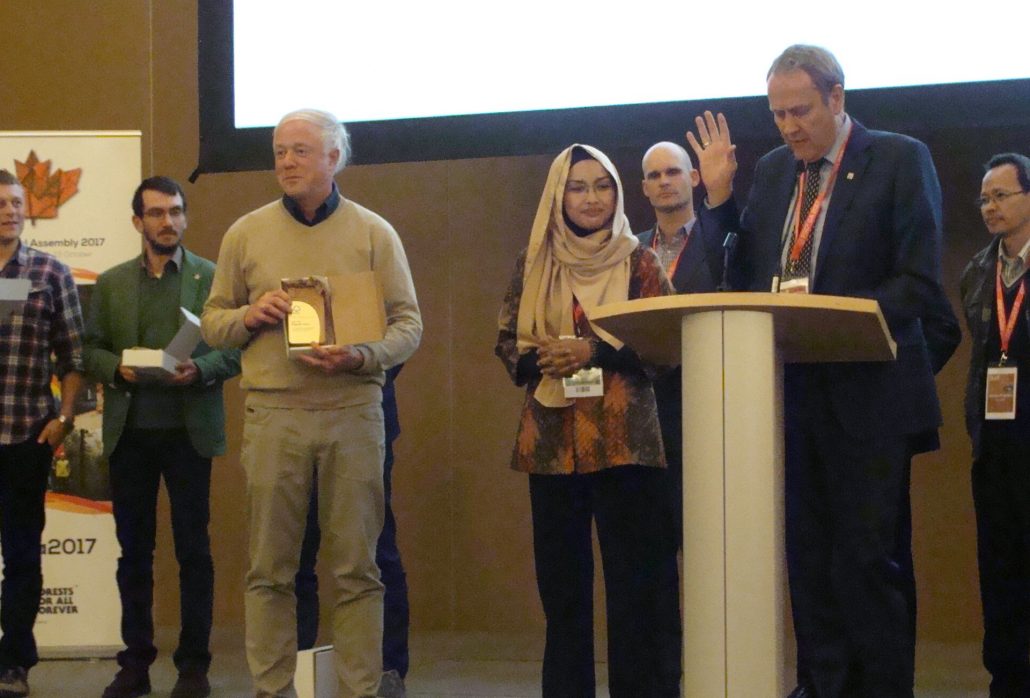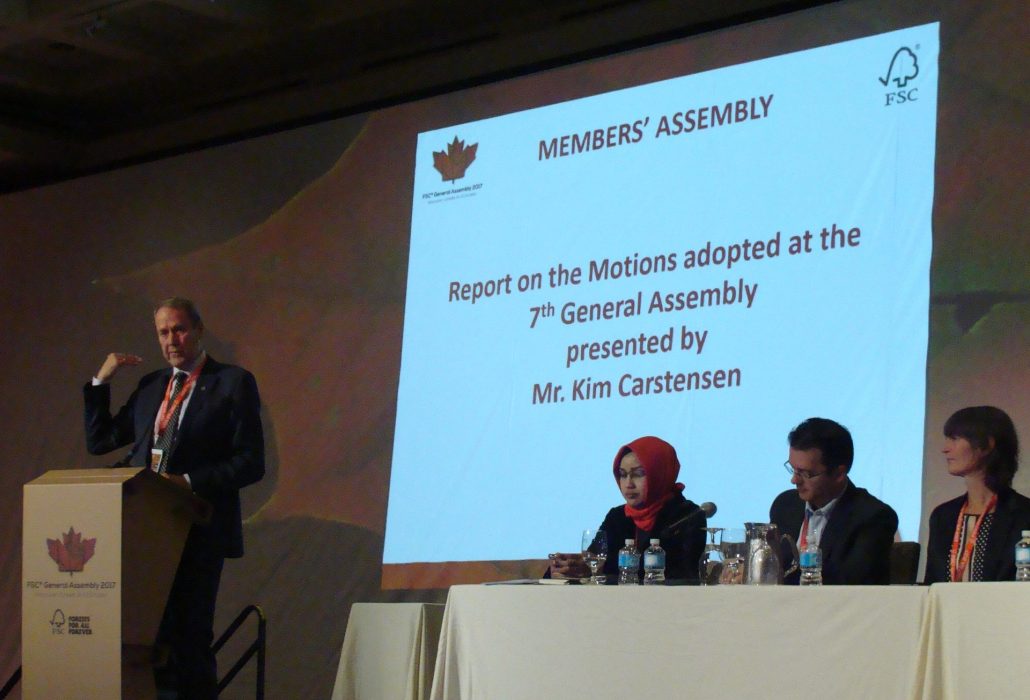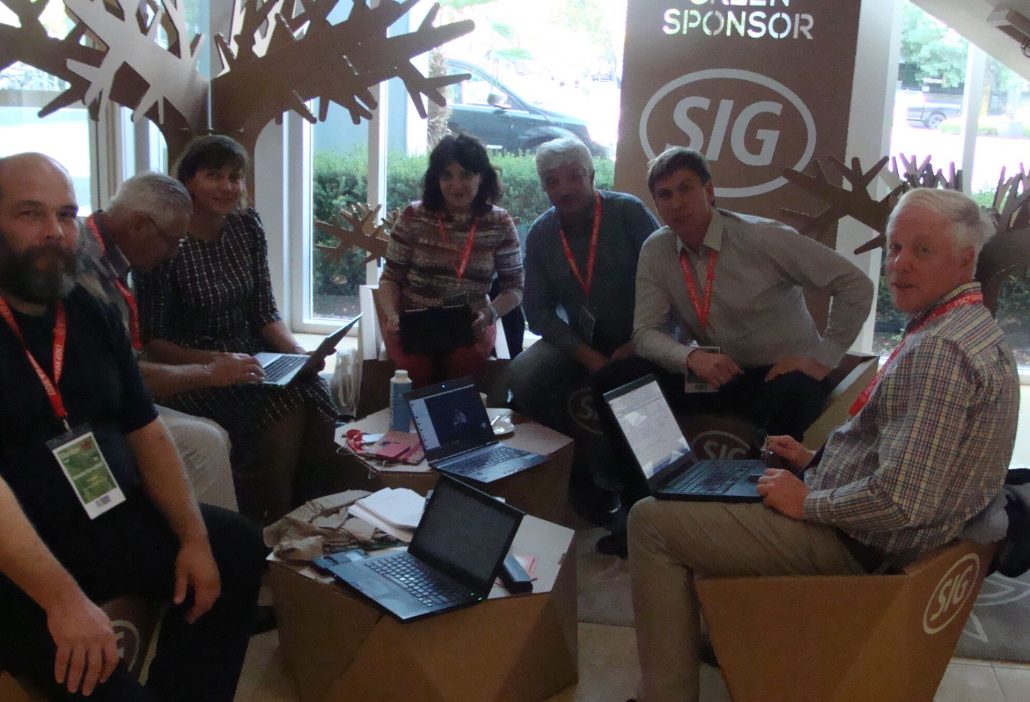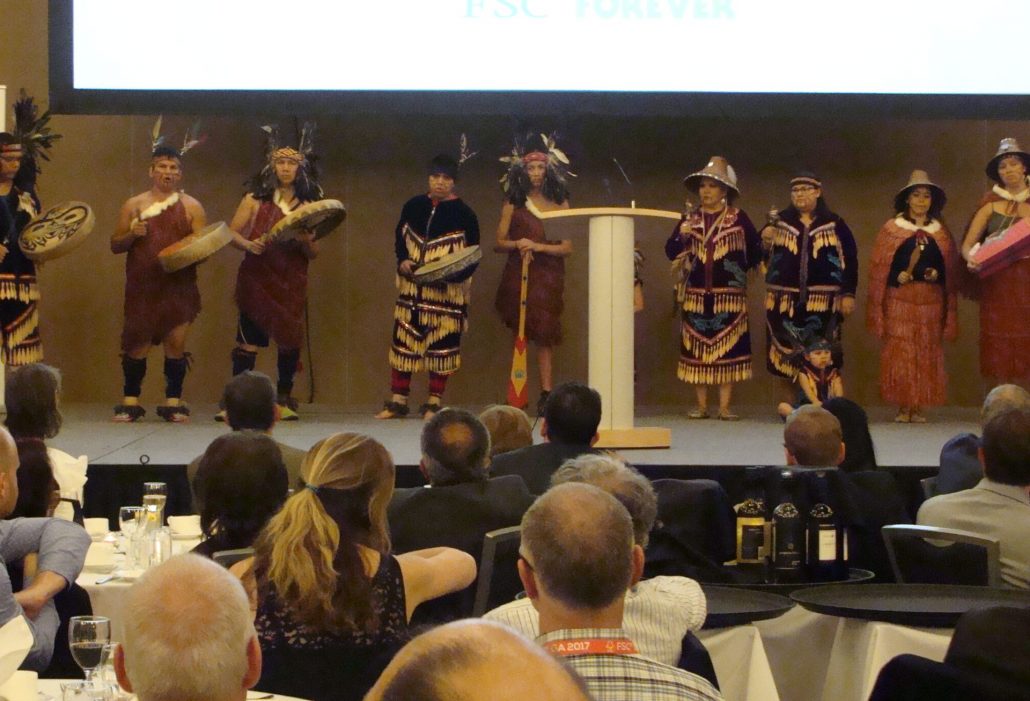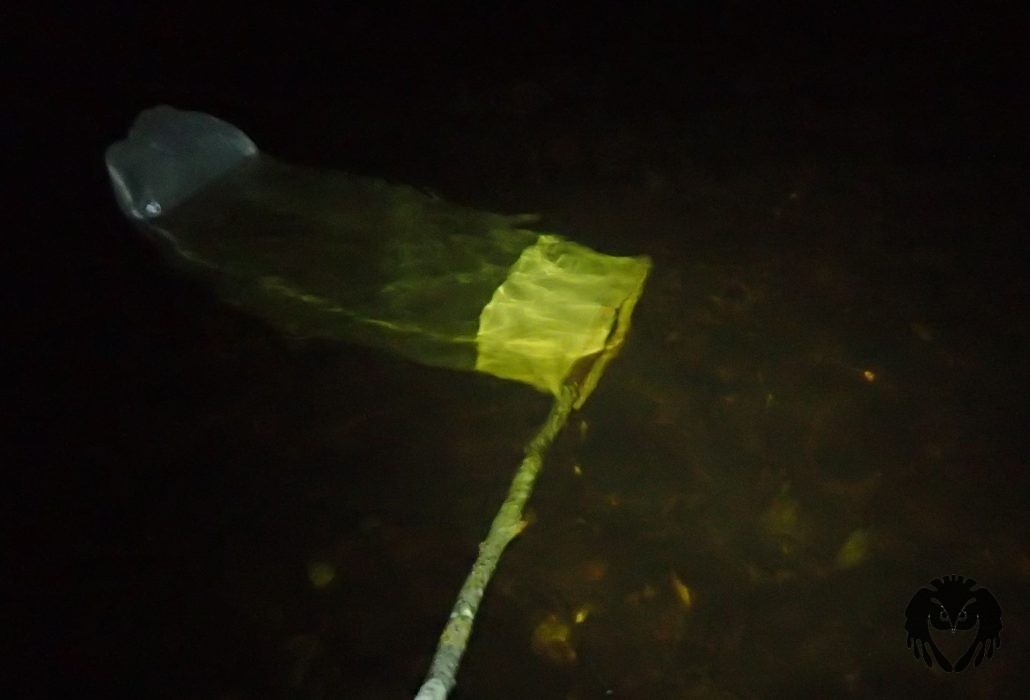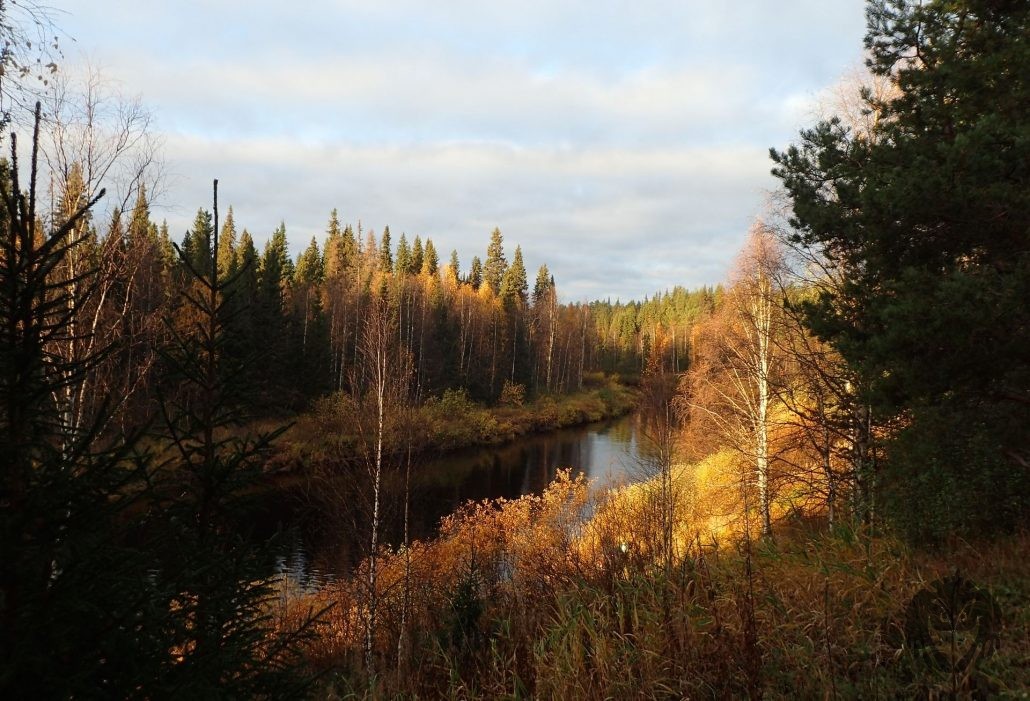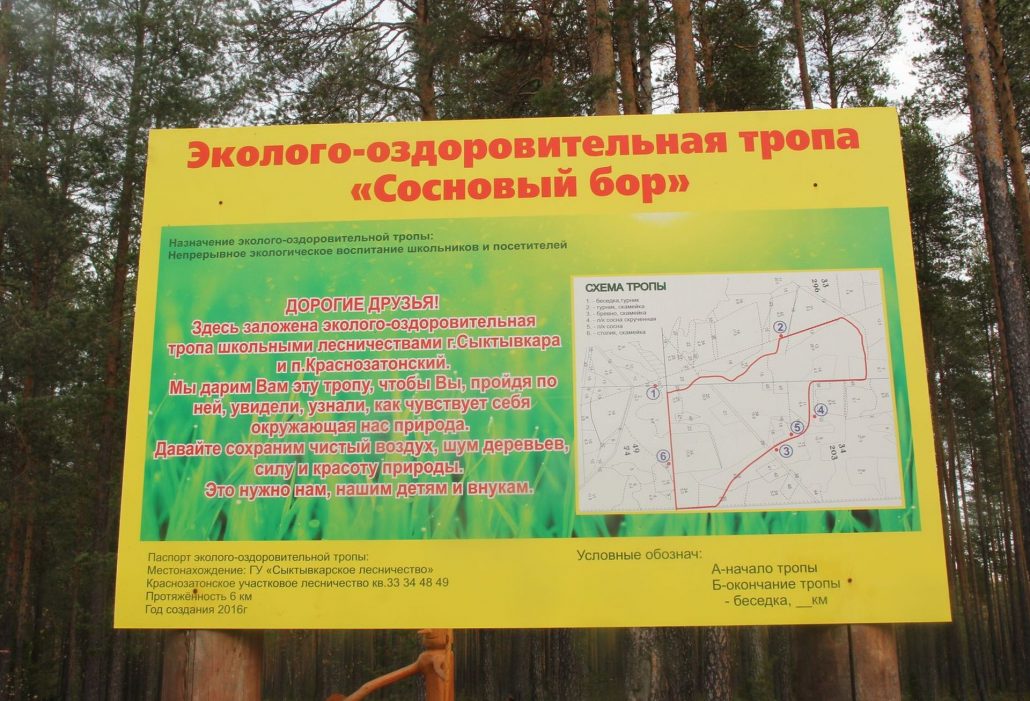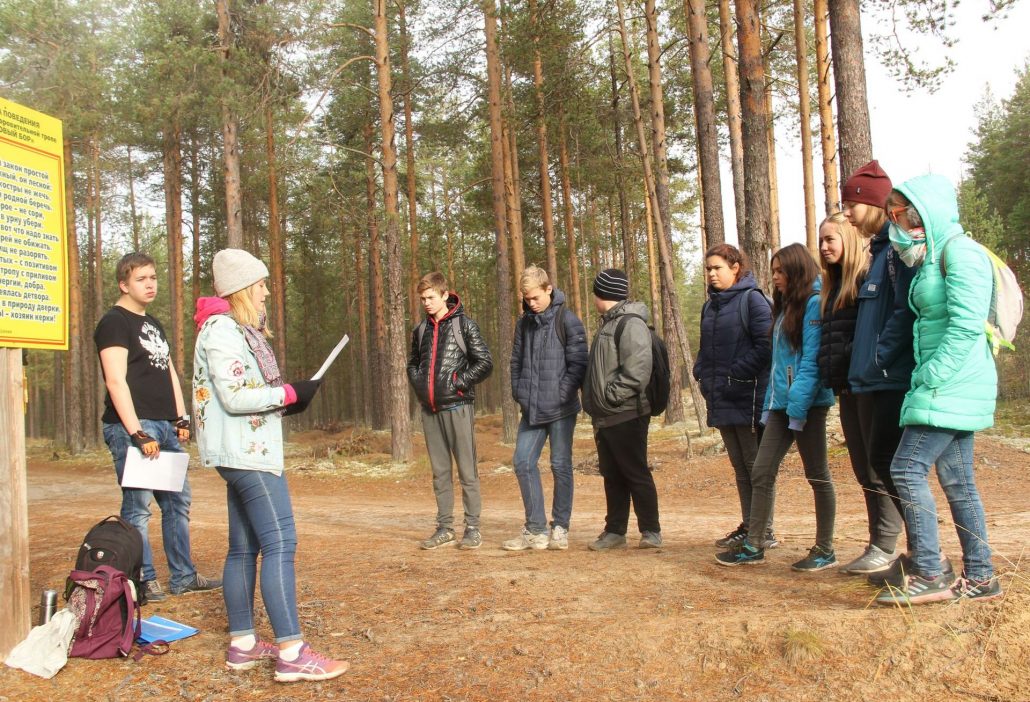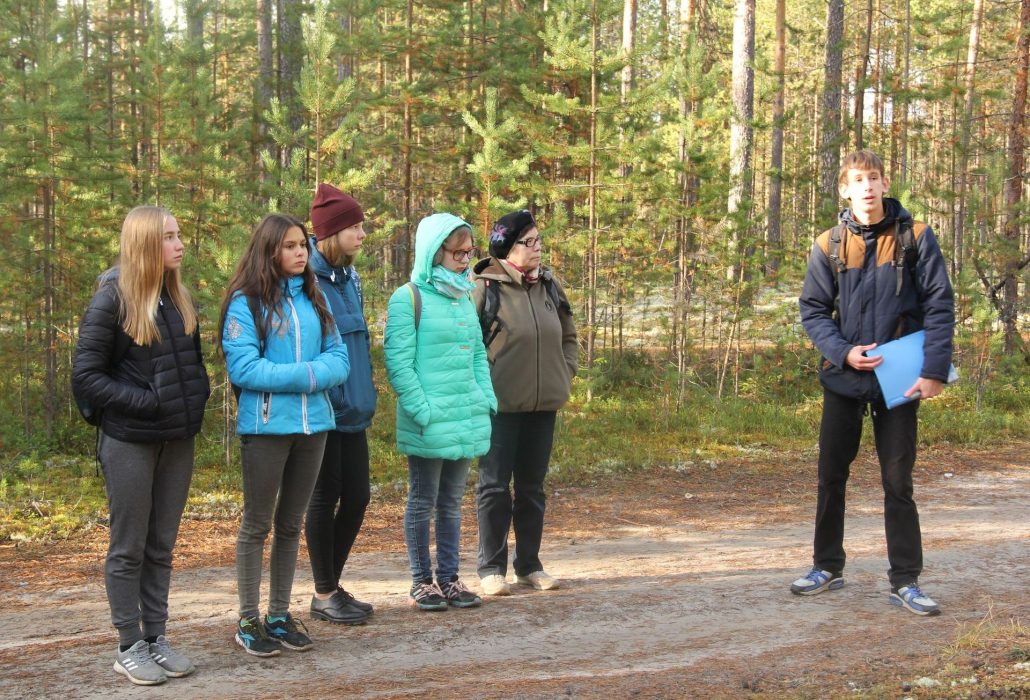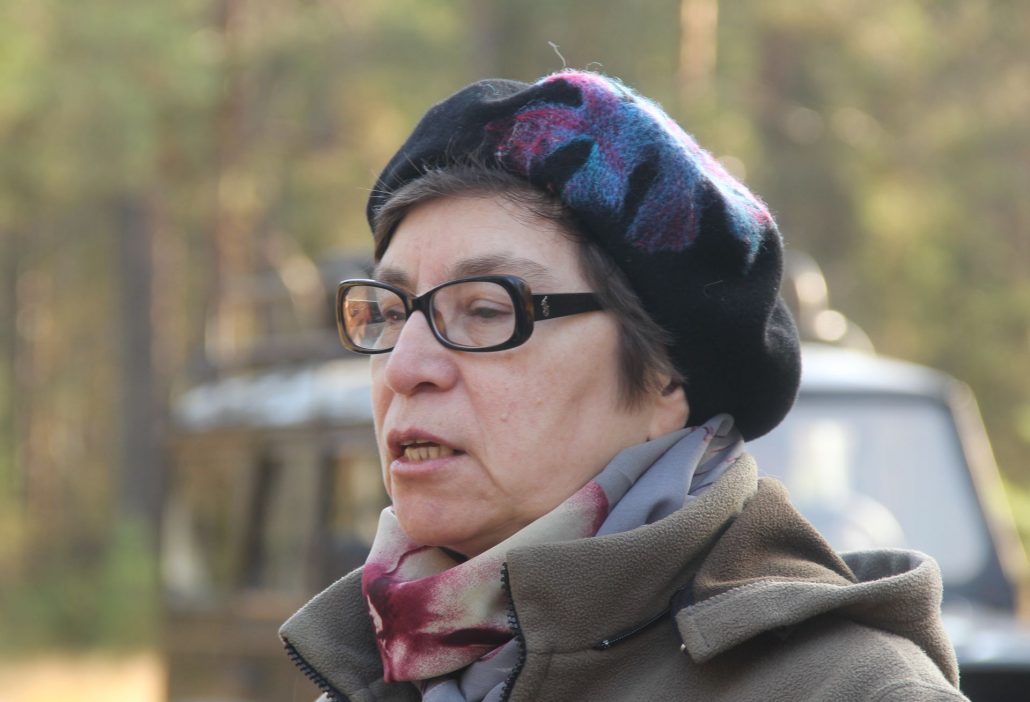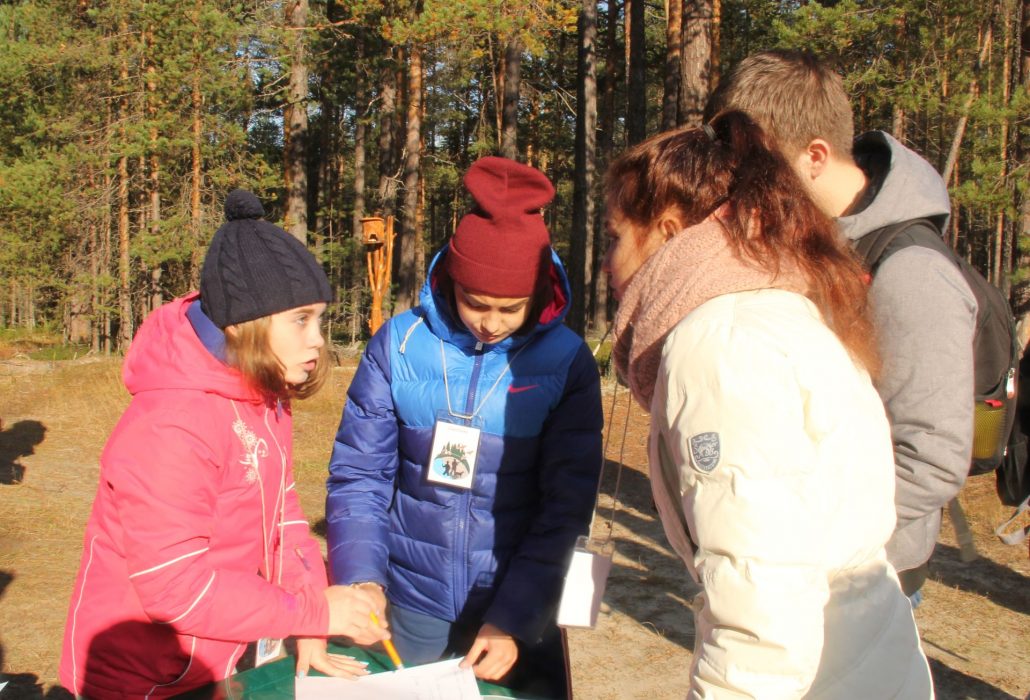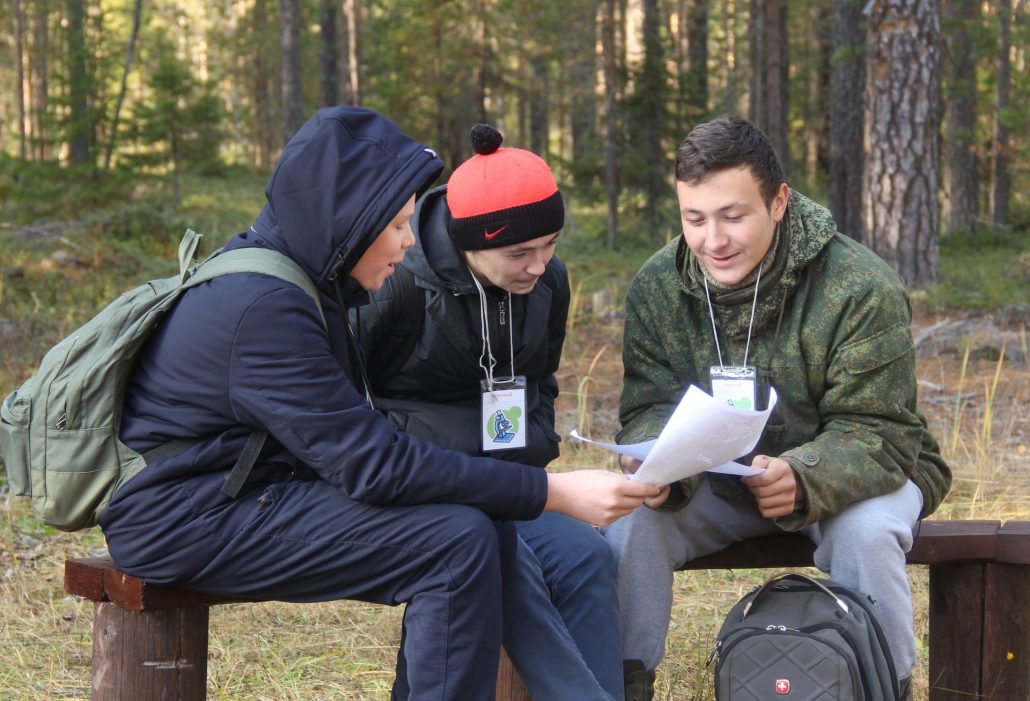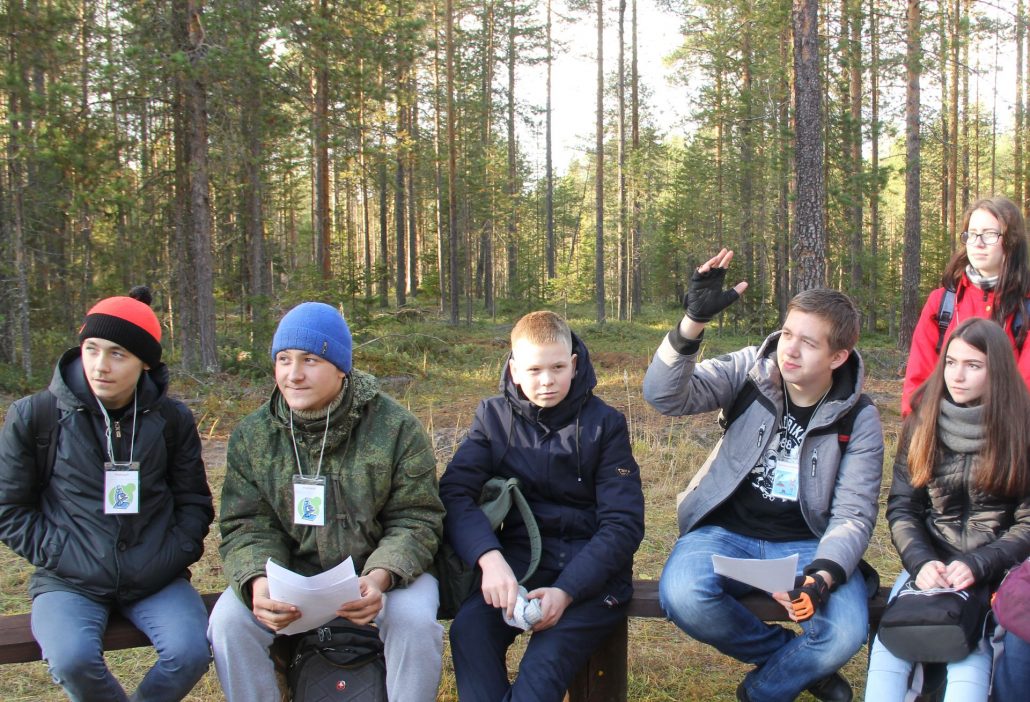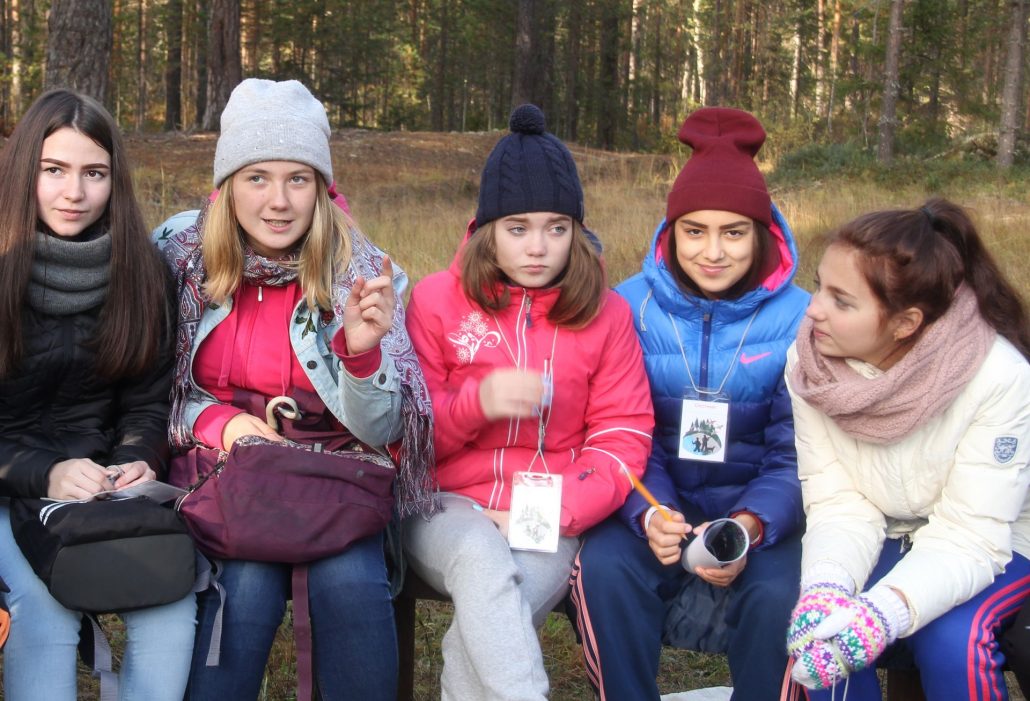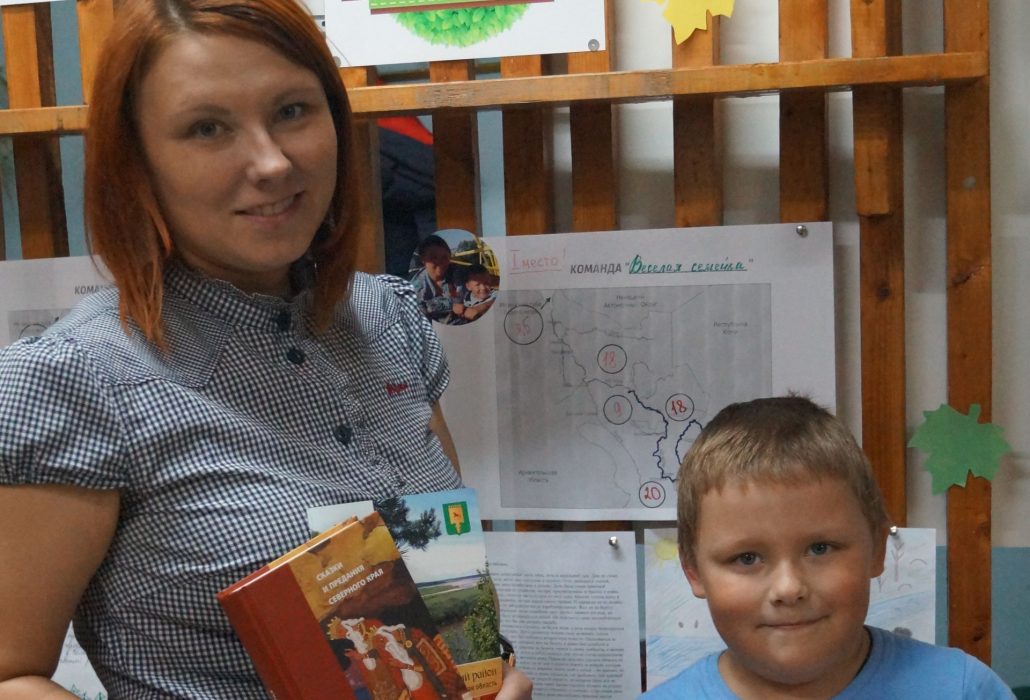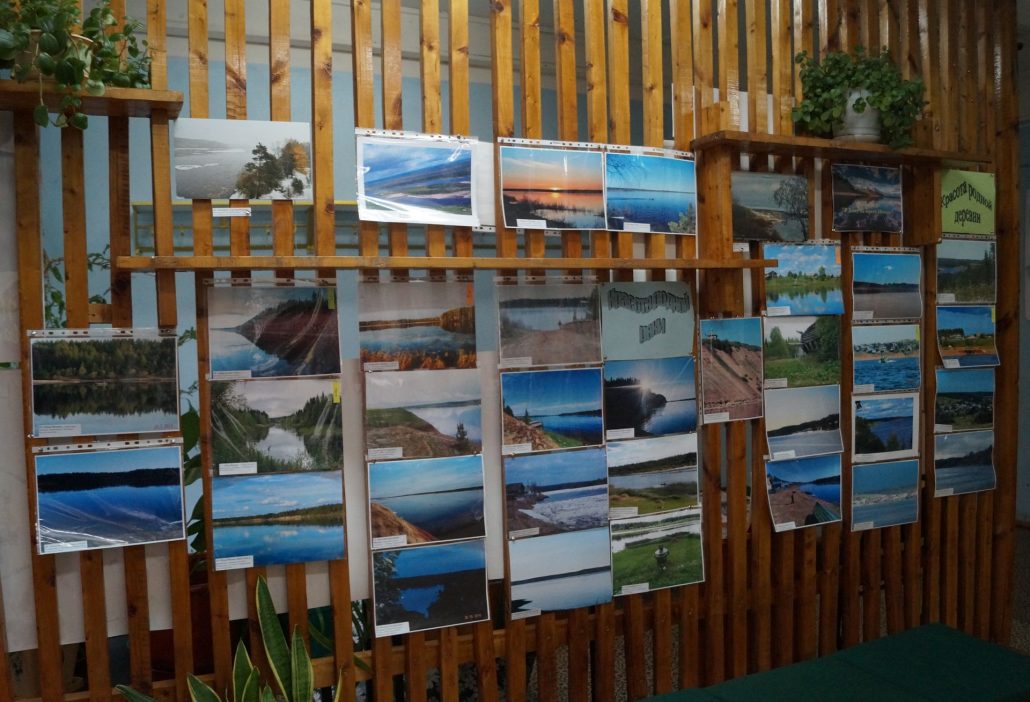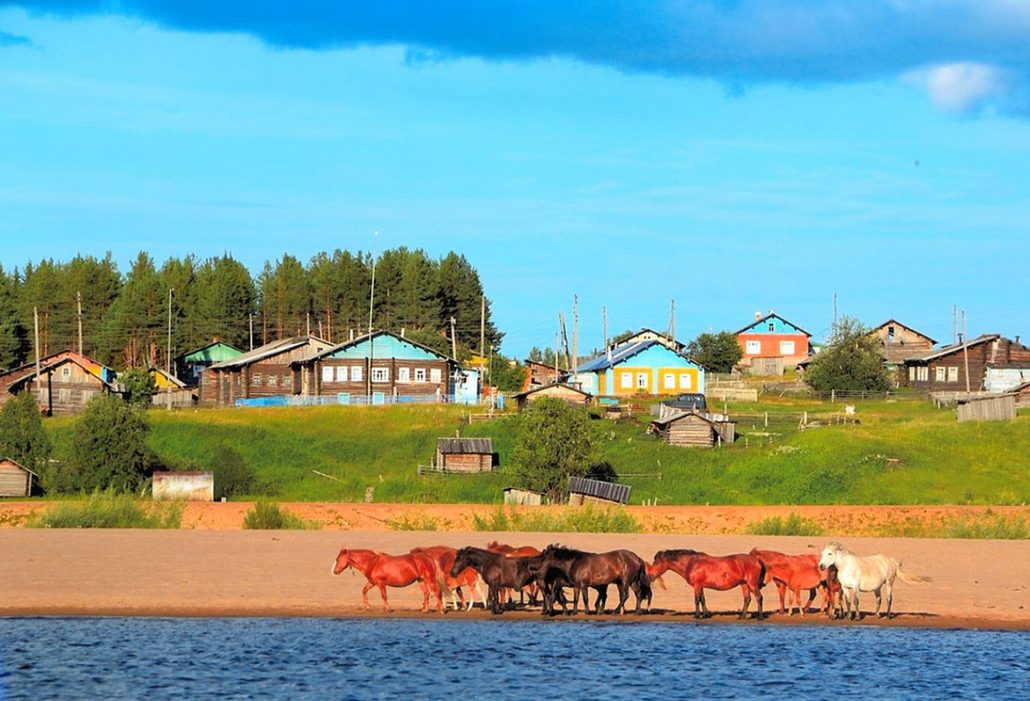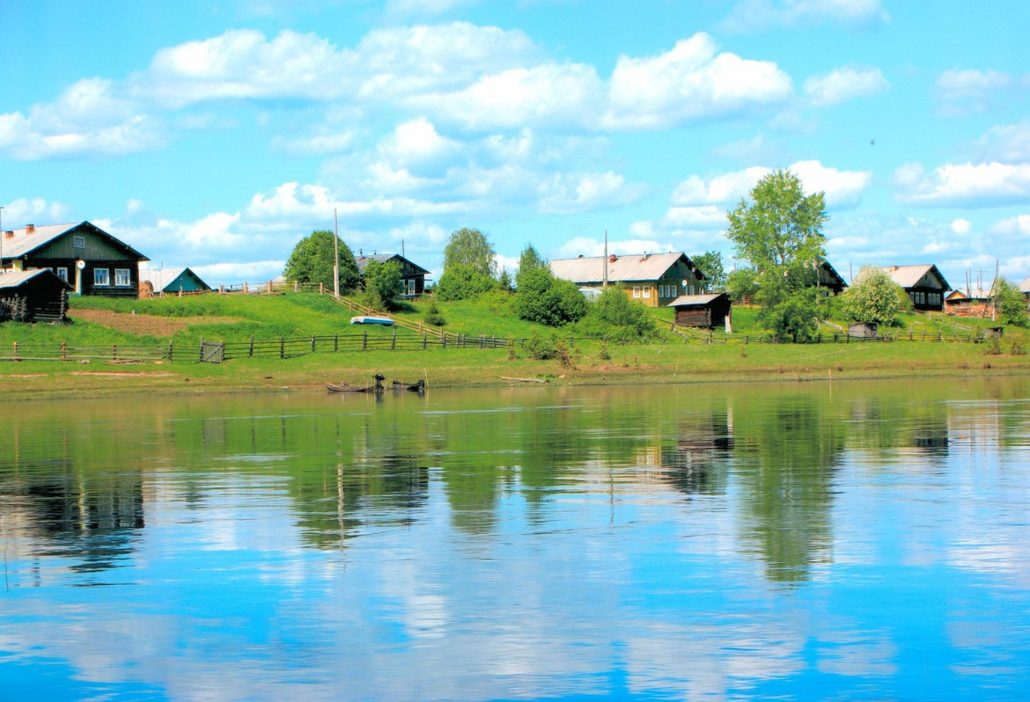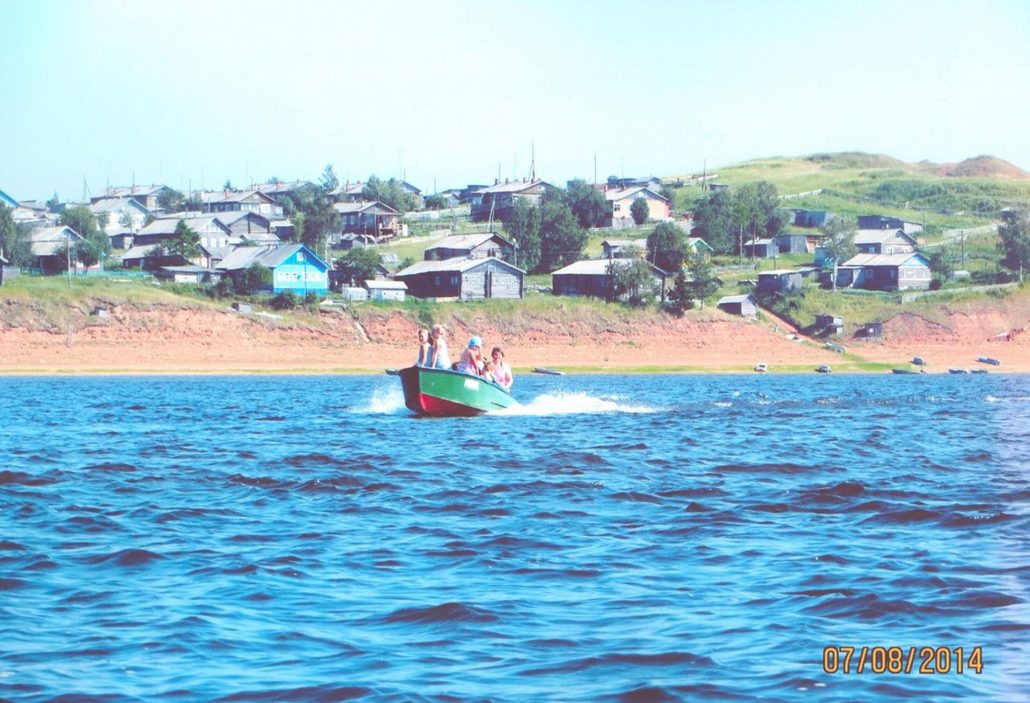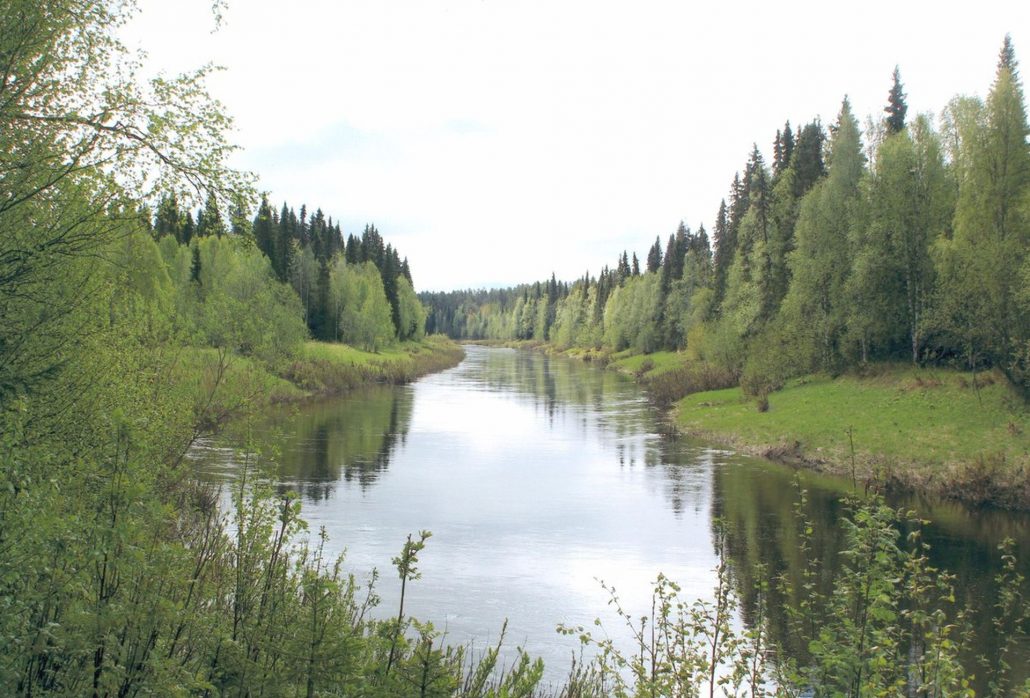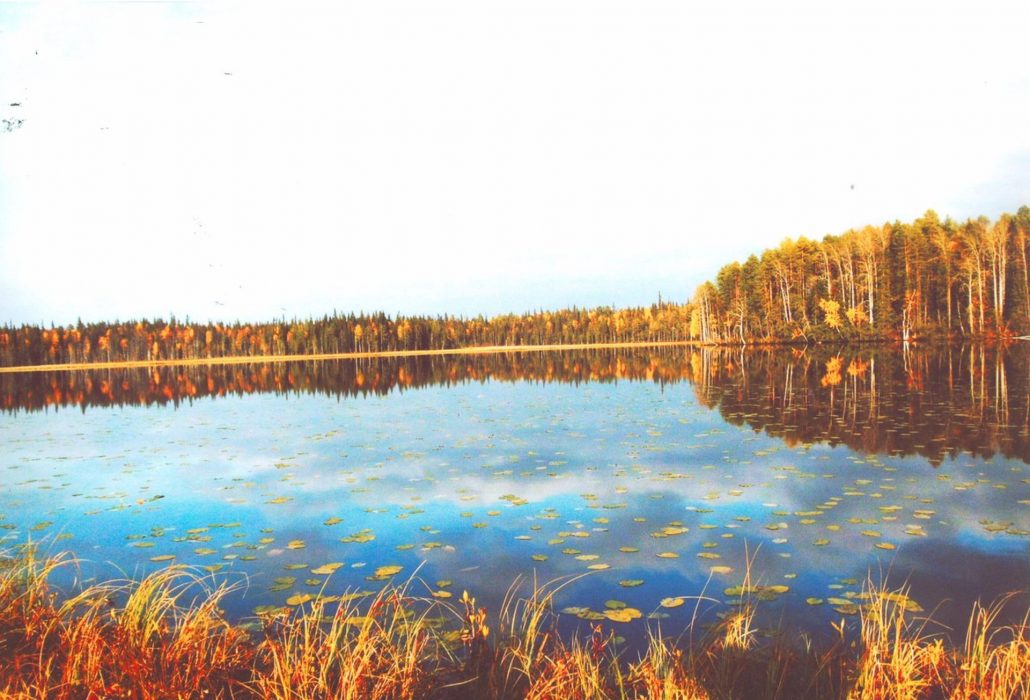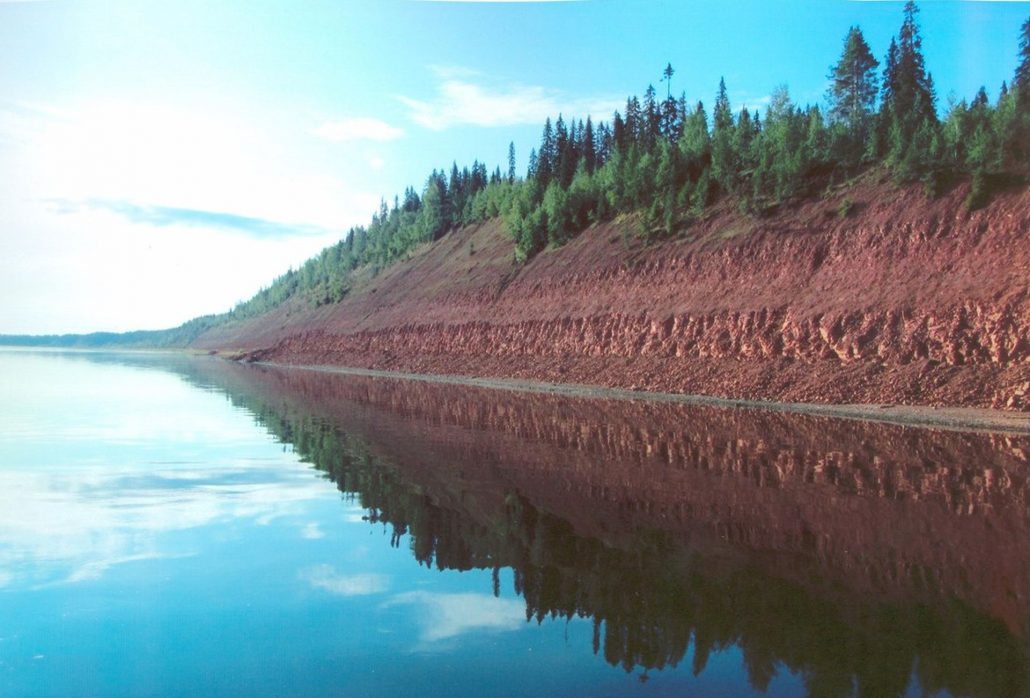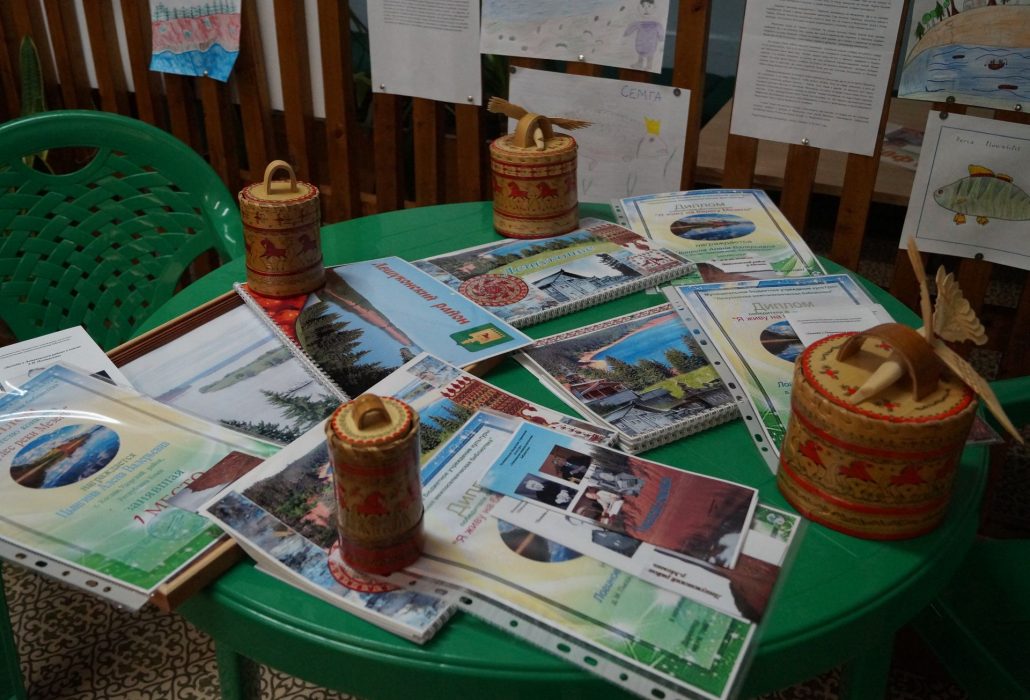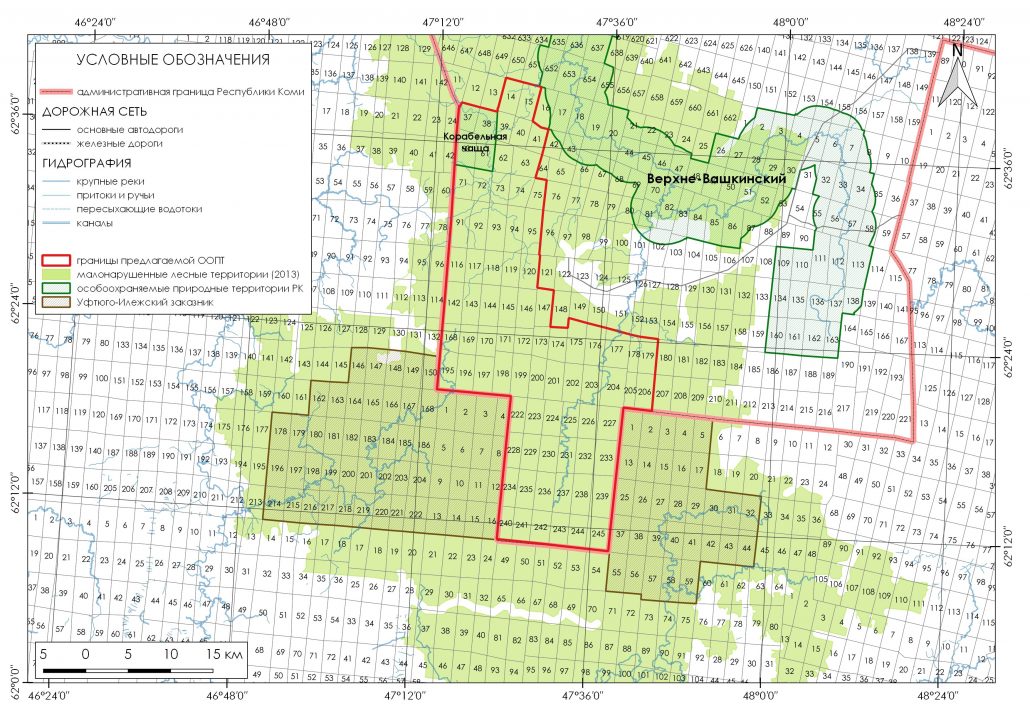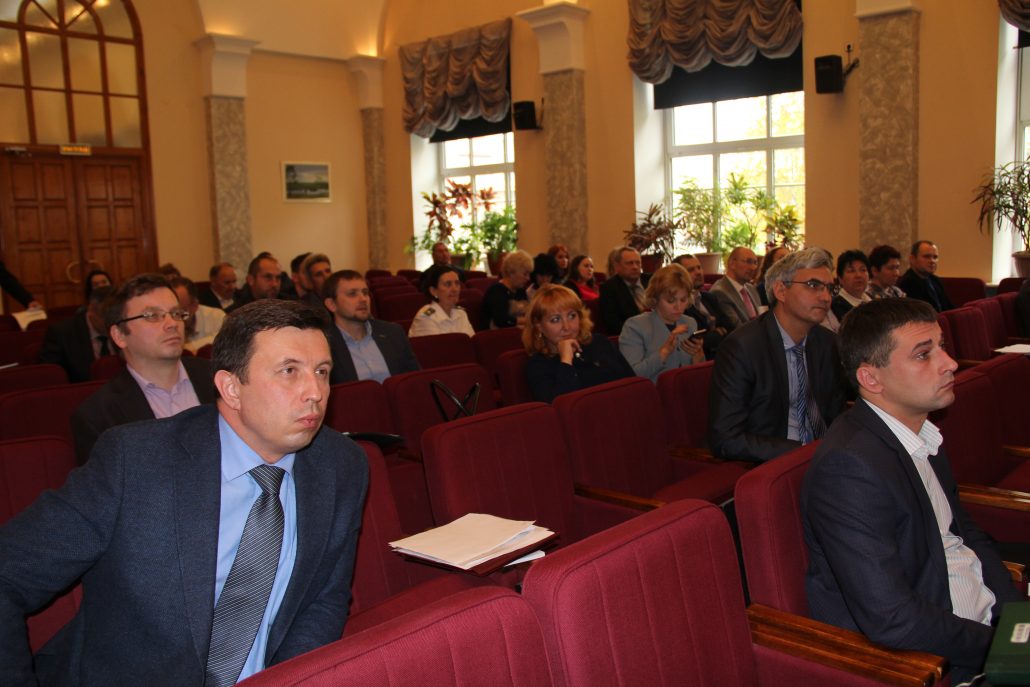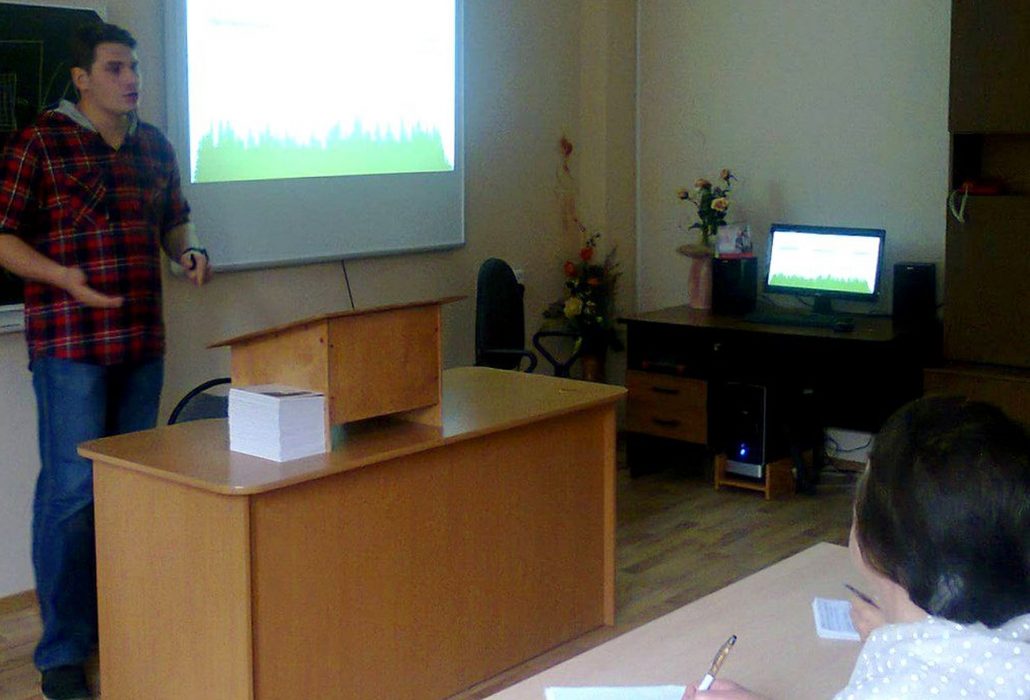Silver Taiga Foundation’s director Yury Pautov took part in the field tour entitled “Sustainable Forestry – a Dialogue between Canada and other Countries” where experts from Russia and other forested regions learned about the experience of forestry landscape planning at Alberta’s lowland landscapes.
The workshop was held as part of the preparation for the FSC General Assembly that took place from 8 to 13 October in Vancouver, Canada. It was facilitated by FSC Canada and one of the leading North American forestry companies Alberta-Pacific Forest Industries (Al-Pac), as well as by Boreal Forest Platform, an independent platform for free discussion in the field of sustainable forestry, one of initiators of which was the Silver Taiga Foundation.
“To my mind, the workshop was useful both for Russian participants and for representatives of other countries”, Yury Pautov says. “Through observing the way a real FSC certified company operates we saw how you can combine a profitable business with environmental protection and community support in very similar economic and climatic conditions. Аl-Pac leases 7.5 m ha of forested land, with two thirds of it being wetlands and low productive areas. In such conditions there are also no roads, so 75 percent of wood is harvested and hauled in winter, as construction of earth roads at swamps is of no economic benefit. In addition, the biggest part of the leased area is located in the transition zone between boreal softwood forest and prairie dominated by hardwood species, particularly by aspen. And it is aspen that serves as the target species the company focuses on. It is the same aspen as in Russia – low quality, rotten aspen! The average transportation distance is over 200 km. Nevertheless, the company is profitable, it uses up-to-date cutting and road construction technologies. The key product is pulp and ethanol. While softwood species are sold to sawmills…
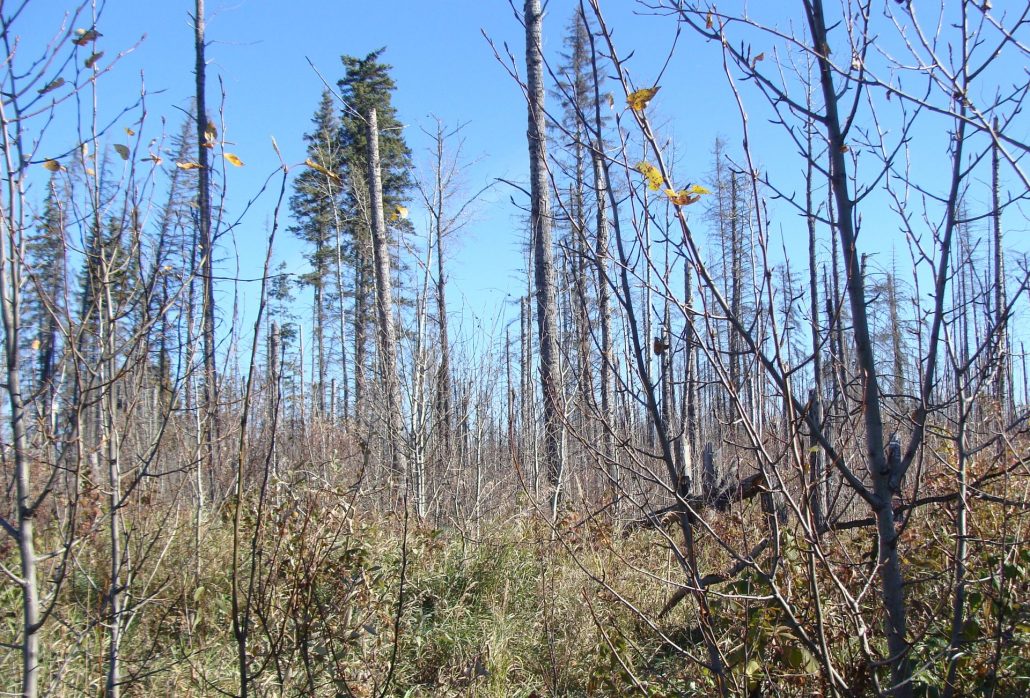
Young aspen forest at the area which was burnt by the fire 9 years ago
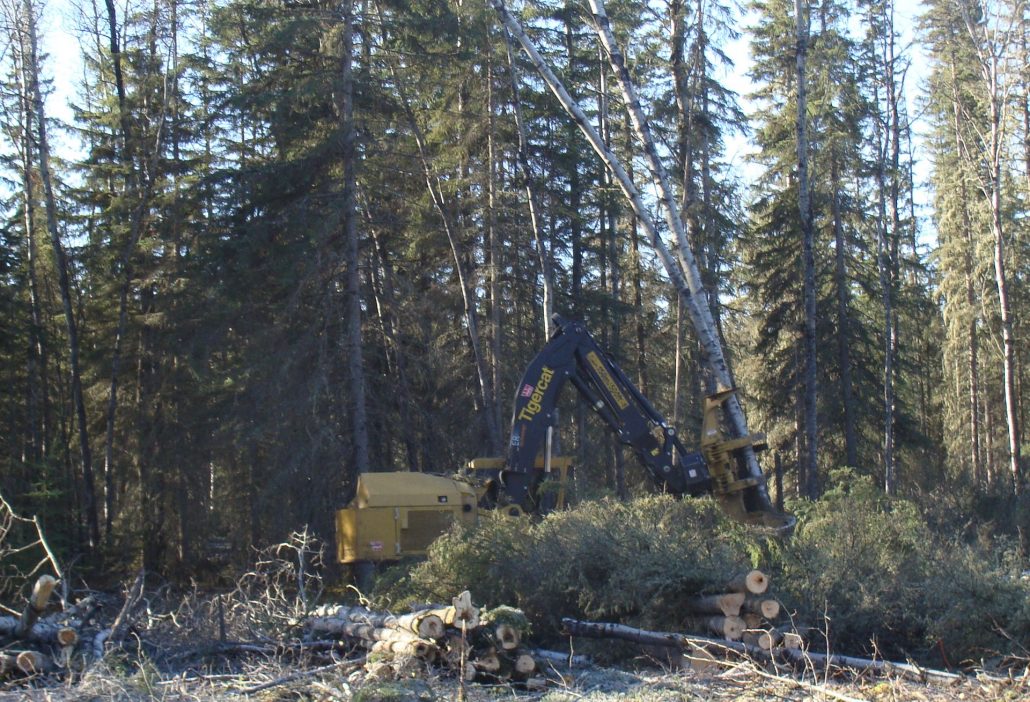
Tigercat harvester can cut and pile several trees at once to facilitate subsequent skidding
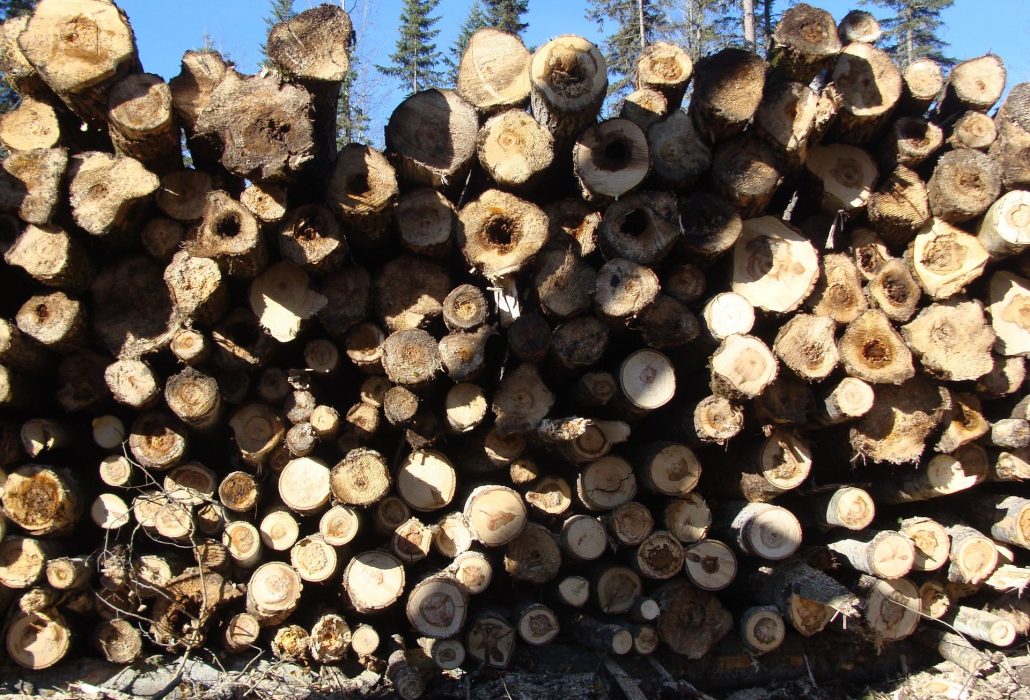
Pile of aspen logs ready to be loaded onto trucks
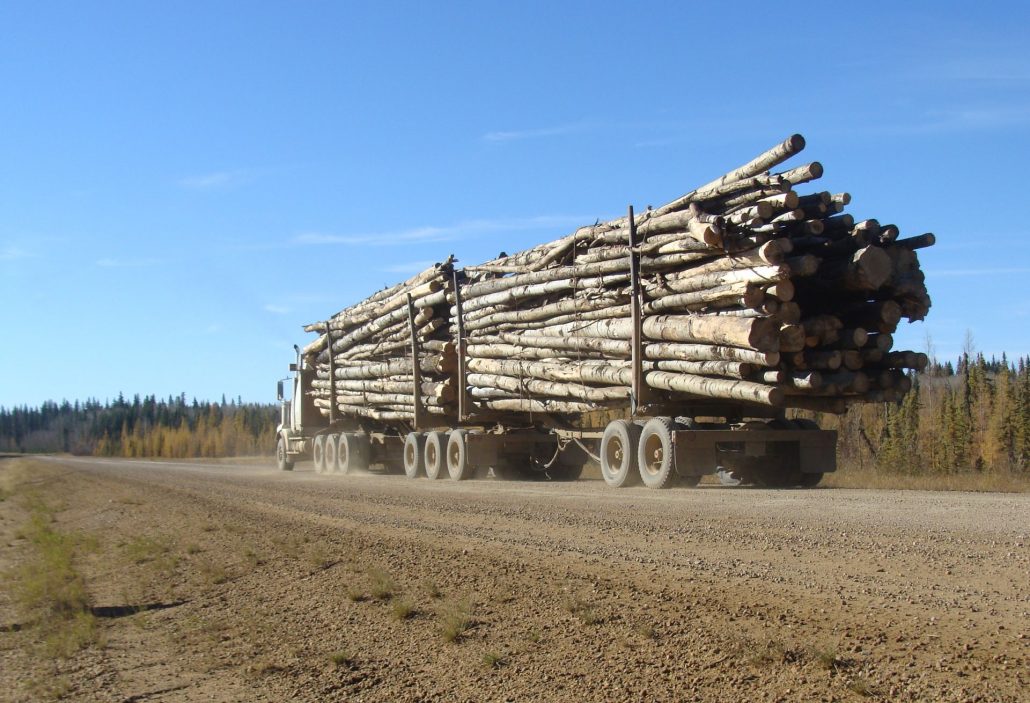
Average transportation distance to the pulp mill is 250 km
According to Yury Pautov, what is known in Russia to be clear cutting isn’t practiced there. Precisely detailed laser ground survey able to register all properties of the landscape is used for forestry planning. Natural history-based “turnover” of forest fires is 60-80 years, according to the company managers. Cutting imitates natural fire dynamics. It is clear that fire doesn’t burn everything, but only the most well drained parts of landscape, so harvesting is planned with this regard. The average size of one logging plot may amount to 2 thousand ha, but only 20-30 percent of the area may be cut. Specially trained teams of delineation experts use space images, aerial photography and laser survey data to draw the borders of the natural fire. Within these borders they mark the boundaries of clear cutting area, plan forest roads and cutting areas adjacent to them, logways, etc. This is necessary, because the mature forest at the area which burnt 60 years ago is similar age. Thus they imitate fire impact by means of logging. At the same time, they preserve biotopes and old trees which remained intact during the last fire for some reasons.
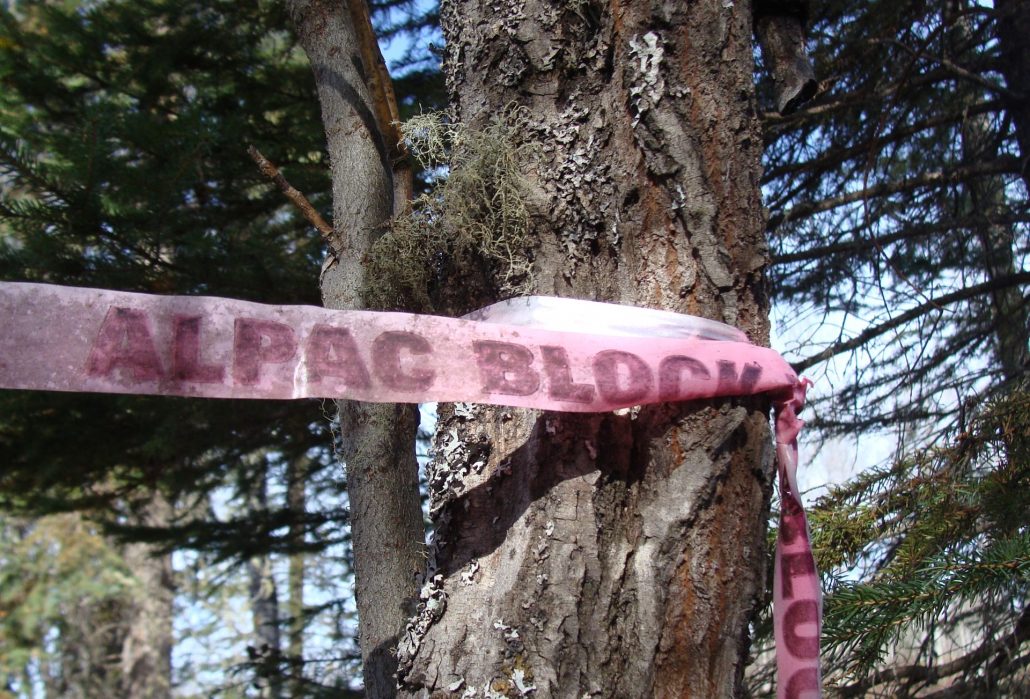
Boundaries of clear cutting areas and their exact GPS coordinates are marked on process sheets and indicated by coloured tape in kind
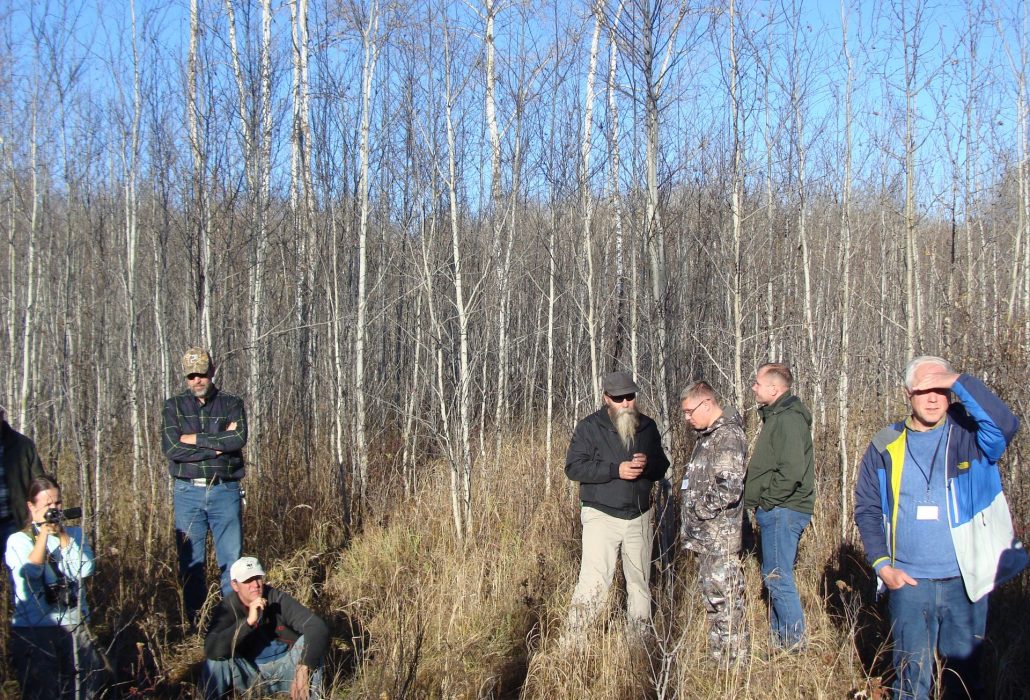
Workshop participants at the area cut 8 years ago
The landscape in this area is flat and swampy, and even minor lowlands are covered with wetlands, which on the one hand are significant from the biological and environmental points of view, and on the other hand are inefficient for harvesting, so the company takes this feature in account and maintains the hydrological network of the area by building bridge crossings over minor streams and hollows and conserving water protection zones along streams and wetlands.
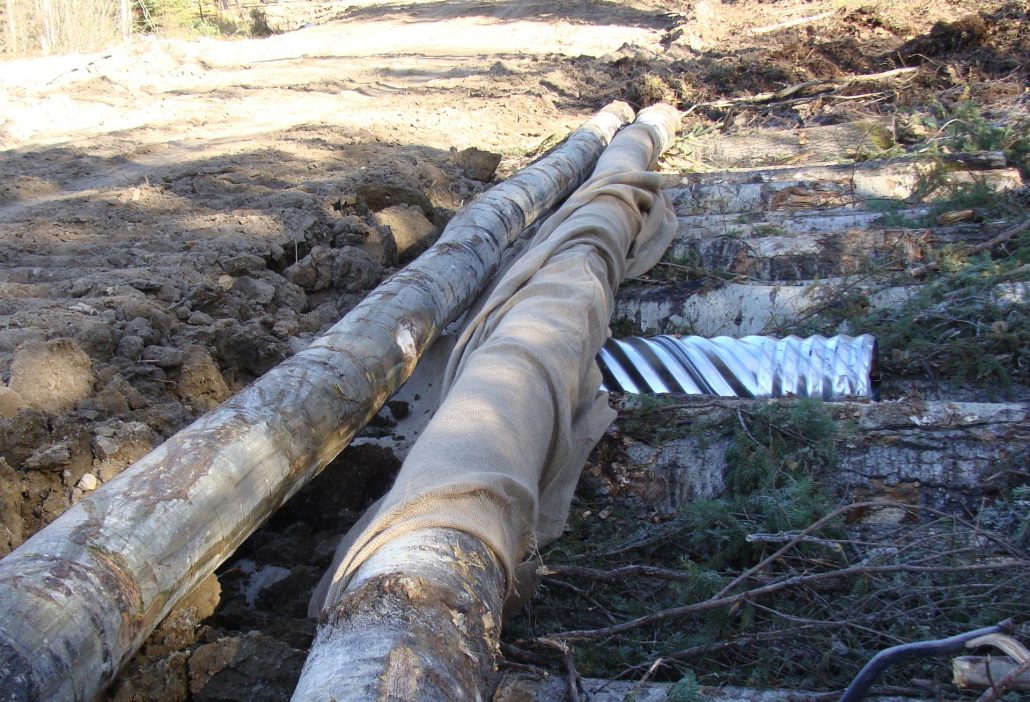
Temporary bridge crossings over streams and hollows is a mandatory condition for forest cutting
Why is harvesting still cost effective with such an approach to logging planning (when only 20-30 percent of the area is cut and mostly unmarketable aspen is obtained)?
“Canada’s advantage in this case is that the natural use rules, as well as forest use regulations, are defined not on the federal level as in our country, but on the province level,” Yury Pautov answers. “It allows taking all social, economic and landscape properties of the region into account. Moreover, the rent is paid not to the federal center, but to the province government, so it is the local government that defines the rules of lease and cutting. In our country, as is known, the rules of the game are defined by federal officials who fail to understand regional peculiarities, or distinctive features of landscapes of different areas… A forest user is left with no options to apply any justified or rational approach to cutting, which should be different in different situations.
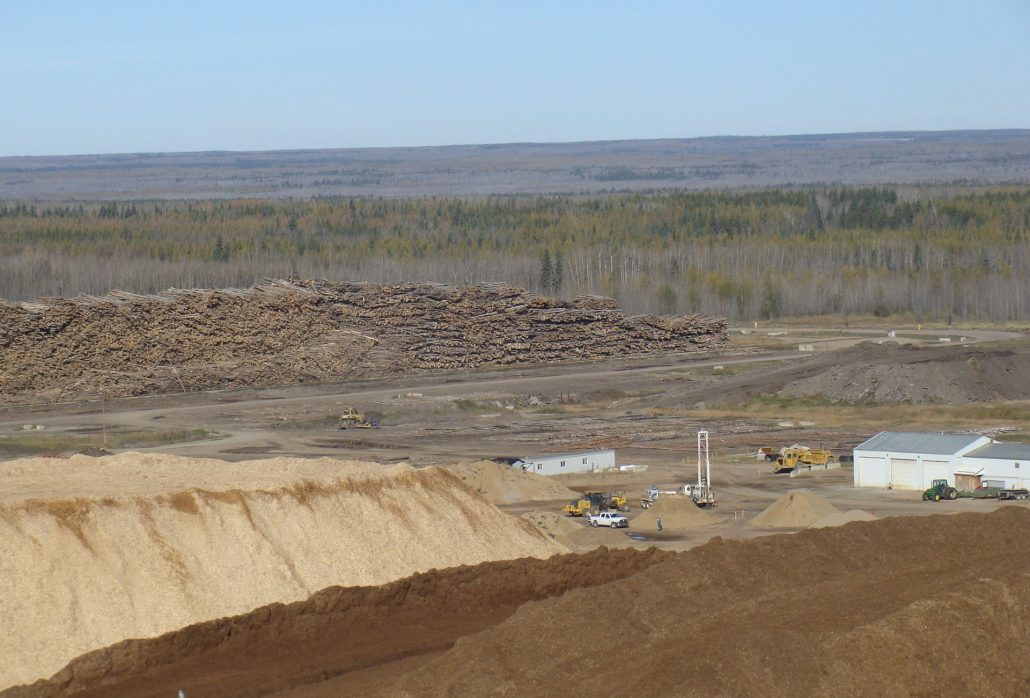
Storage of logs and processed aspen chips at Al Pac pulp mill. Behind you can see endless aspen and birch forests surrounding the mill

Bleached pulp is one of the finished goods of Al-Pac
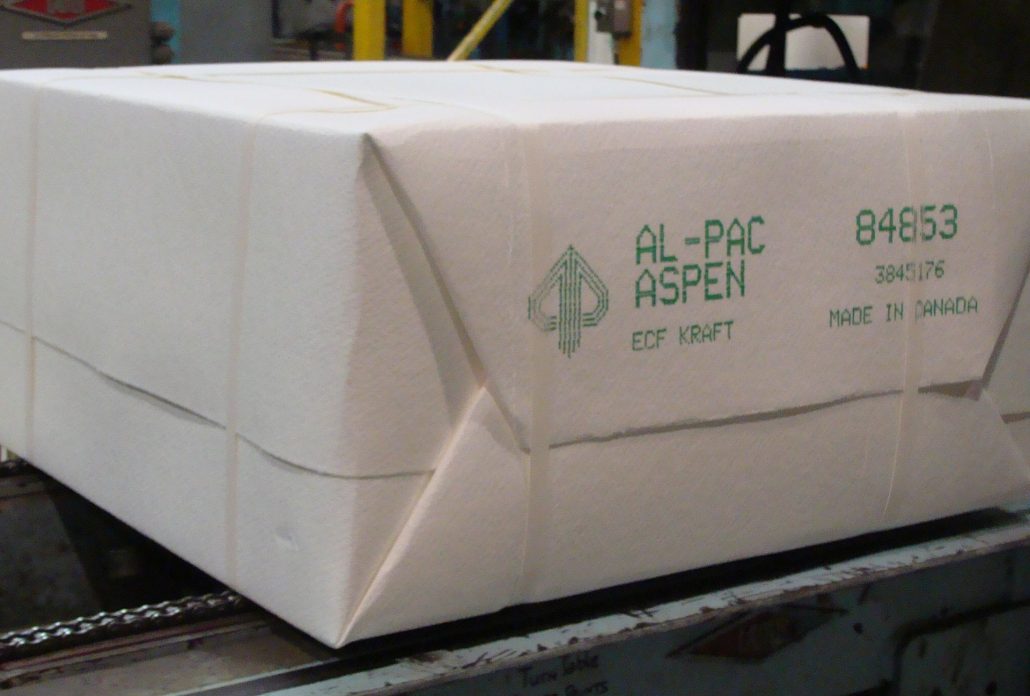
Al-Pac finished goods – packaging cardboard
Another interesting detail of the field tour for the Russian participants was that the main contractors of Al-Pac in this area (Lac La Biche municipality 200 km to the North-East of Edmonton, capital of Alberta) are Russians – people from the Russian Old Believers’ community, who came to Alberta in 1974. To make it happen the members of the community (including previous generations) travelled almost half the globe. Their motherland is Primorye. The ancestors of these people escaped from that place and the Bolsheviks during the Civil War to Brazil via China, and then to the USA (Oregon), and their descendants finally settled in Canada having founded the Berezovka village in Lac La Biche. The community has around 300 people. Some of the community members own equipment, such as harvesters, forwarders, wood trucks, and they operate it with their relatives. Members of the Russian community lead harvesting, hauling and other related operations. The company’s management is satisfied with the cooperation with the Russian community, they value efficiency, honesty and entrepreneurial spirit of those people. Another advantage mentioned by the managers is no alcohol abuse. And the community members in their turn are grateful to the company management for the respect of Old Believers’ traditions and rules, as the company allows them to celebrate all their religious holidays, keep the fast, etc.
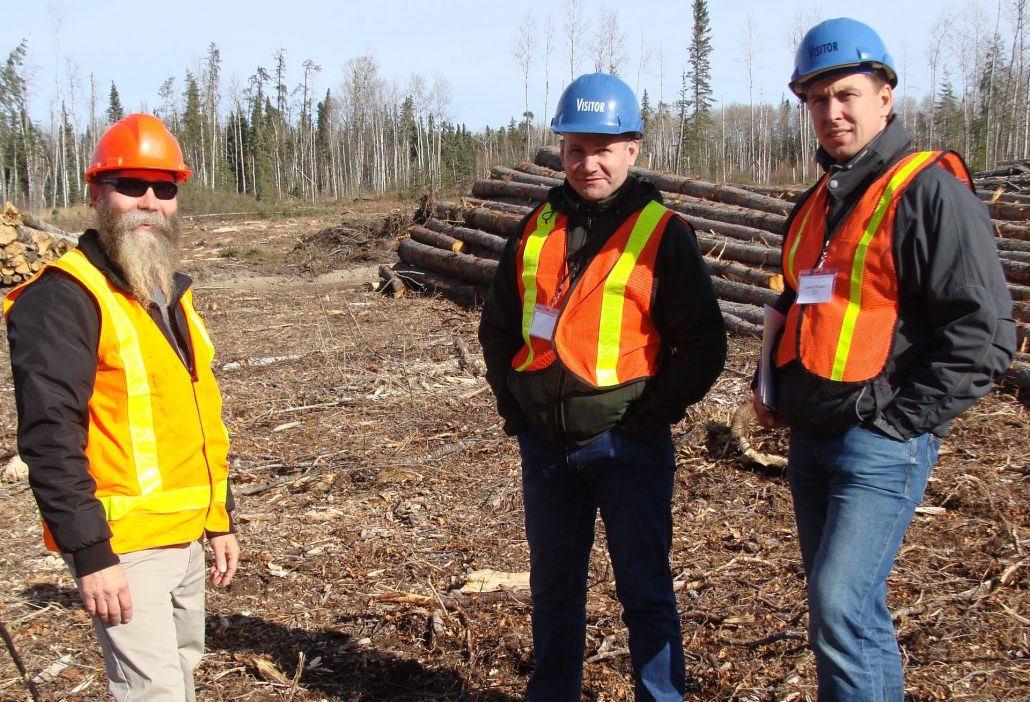
Workshop participants on behalf of Mondi Syktyvkar A. Zaytsev and D.Popov talk to Fedor Martyushev, one of Al Pac’s contractors
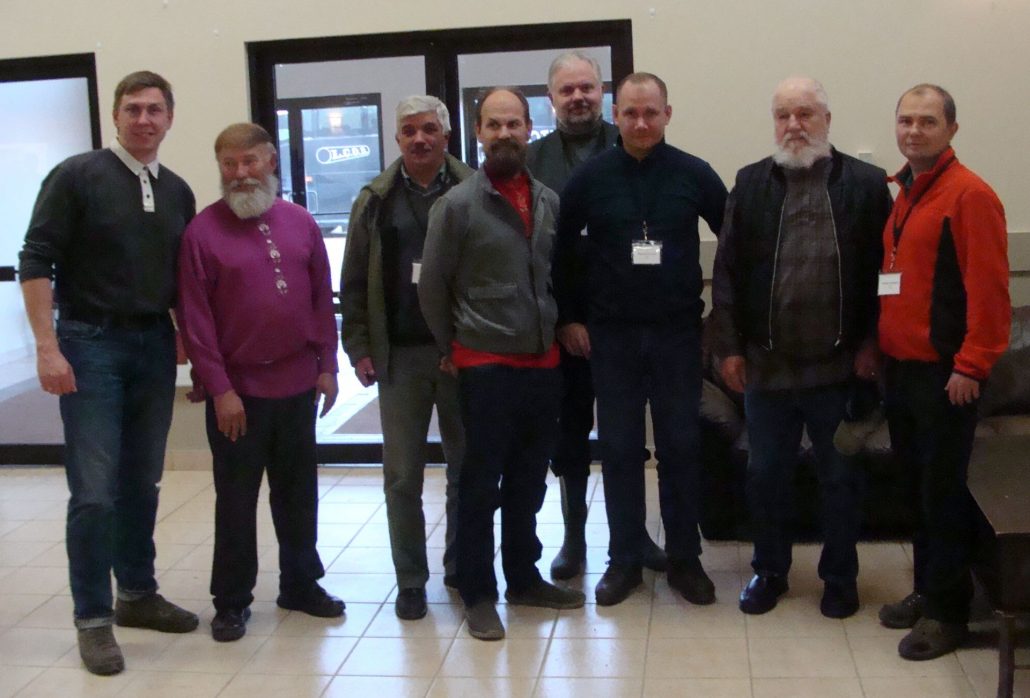
Members of the Russian delegation met Old Believers from Berezovka, Lac La Biche, Alberta
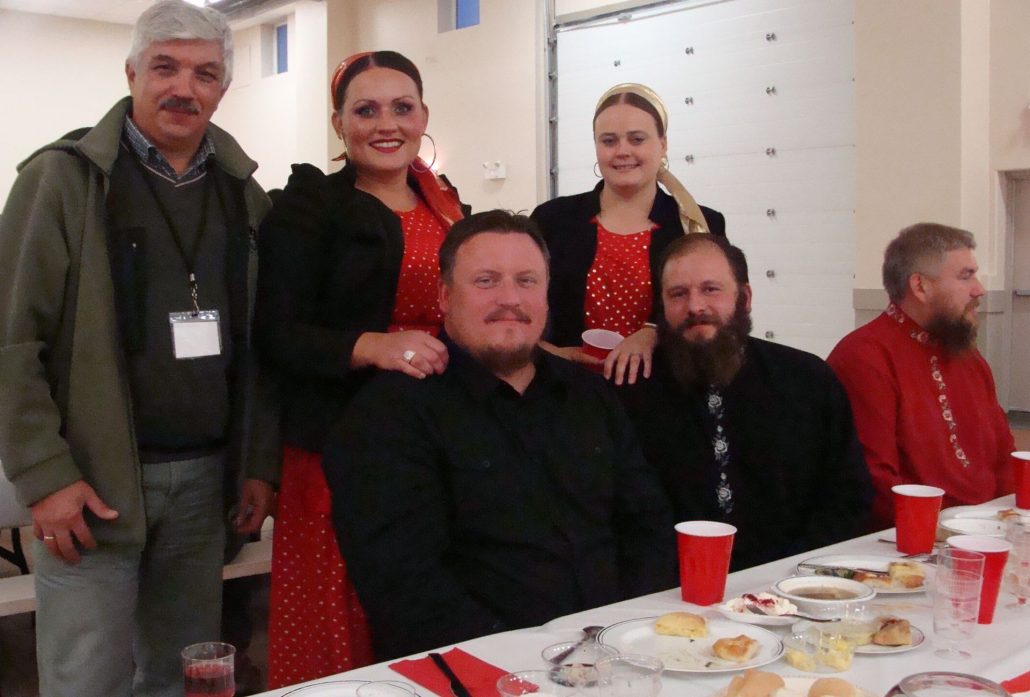
Family traditions are strictly observed in the Old Believers’ community
Although the member of the community have lived for a century away from their motherland and been to different countries surrounded by other cultures and languages, they managed to preserve their language, customs and traditions, culture and faith. In the community settlement Russian is taught together with the official English and French languages.

The menu of the festive dinner in the Old Believers’ community: typical Russian dishes – haladets (aspic), salanina (corned beef), perok (pie) — are unusual to be spelled in English
“Even though none of the community members were born in Russia, they all spoke Russia to us,” Yury Pautov says. “And they speak Russian with each other, while English is used to talk to the others. What makes them look differently from other municipality residents is that all men have beards and women wear sarafans. In addition, families of Russian Old Believers are large with many children…
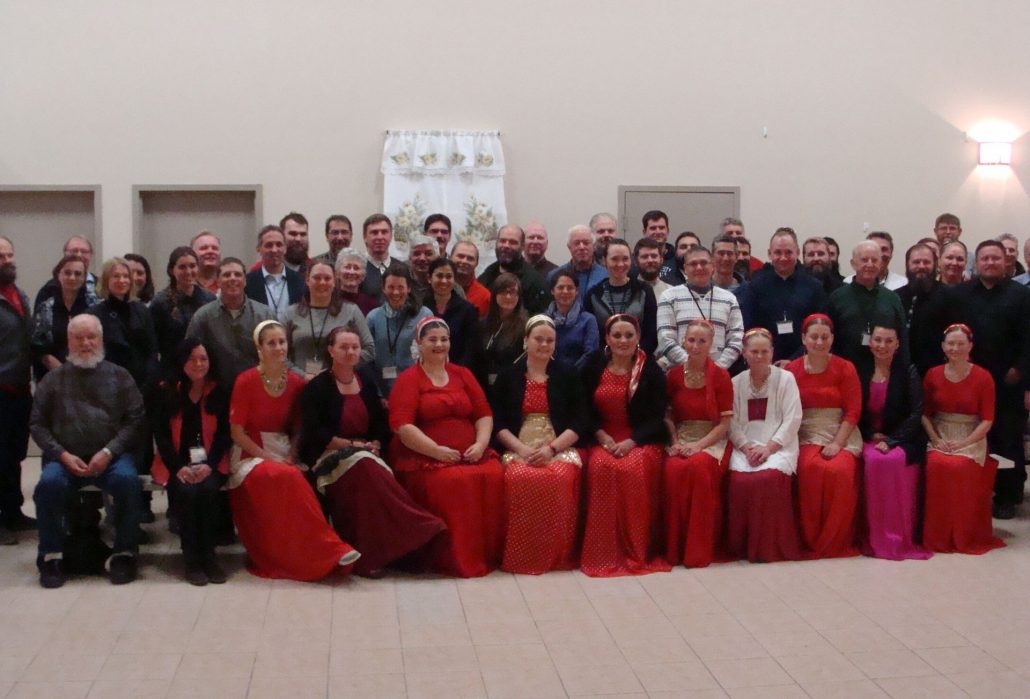
Participants of the field tour at the reception by the Russian Old Believers’ community of Lac La Biche

Al Pac’s souvenir for the Russian community. The writing says, “In recognition of the multi-generational relationships between the Russian Community and Al Pac. Your commitment and quality of service is greatly appreciated. 03.10.2017»
According to Yury Pautov, the thorough study of the successful practice of sustainable forestry in Canadian boreal forest, the new information obtained during the trip, and discussions of everything that was seen and heard will help the Russian participants – representatives of FSC certificate holders, international FSC members, environmental NGO representatives and FSC Russia staff – in their sustainable forestry promoting activity.

